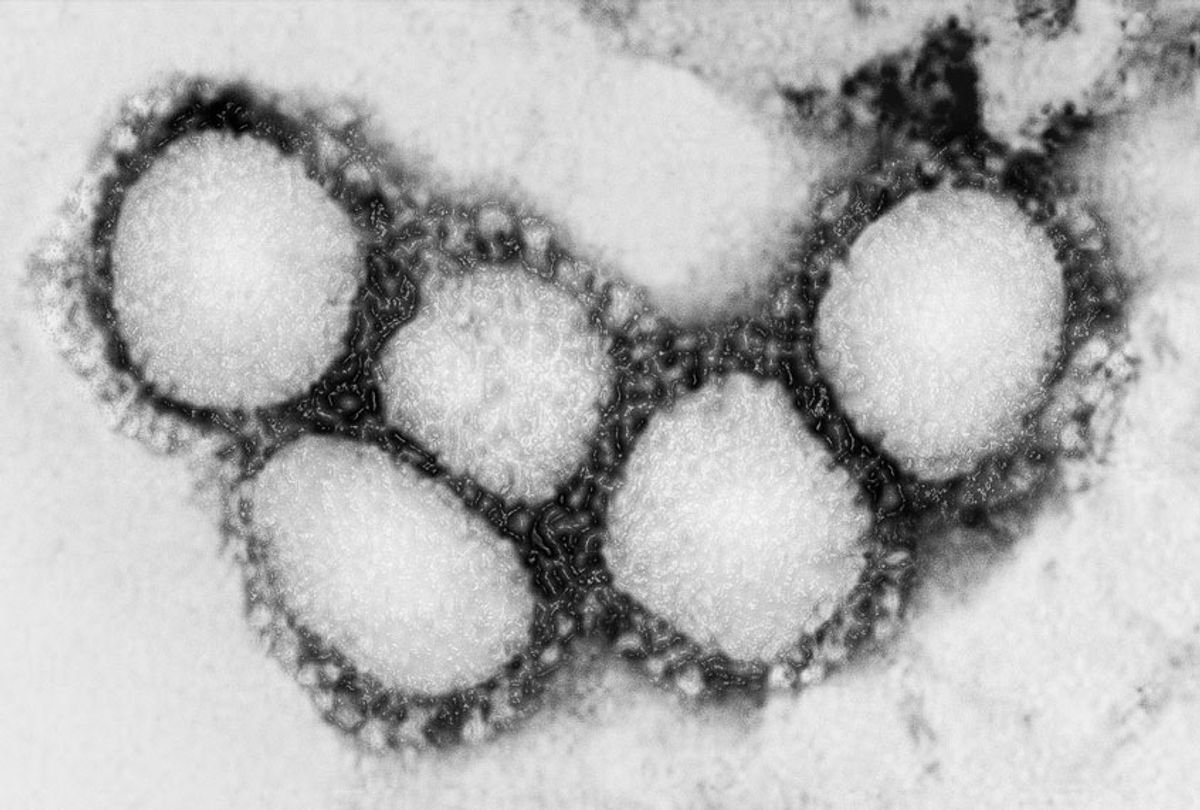When the coronavirus first began spreading, the Centers for Disease Control and Prevention (CDC) stated it was characterized by a specific handful of symptoms: shortness of breath, fever, and a cough. Later, the loss of taste and smell were added to that list of common indicators that a person had coronavirus.
Now, as the number of patients worldwide approaches 4 million, researchers have noticed a new, unexpected symptom manifesting in some: toe rashes. The condition has been dubbed "Covid Toe."
For anxious hypochondriacs who have eczema, this news might be alarming. But unlike eczema, these Covid Toe rashes are more like lesions than a dry itch.
According to the New York Times, federal health officials don't list toe lesions on the list of coronavirus symptoms yet, but some dermatologists are saying that "Covid Toe" should be sufficient grounds for testing. Moreover, these same dermatologists also report that they are being inundated with likely Covid Toe patients.
"All of a sudden, we are inundated with toes," Dr. Lindy Fox, a dermatologist who practices at the University of California, San Francisco, told the New York Times. "I've got clinics filled with people coming in with new toe lesions. And it's not people who had chilblains before — they've never had anything like this."
Evidently, Covid Toe resembles chilblains, meaning the inflammation of small blood vessels in your skin that occur after repeated exposure to cold air. The Covid Toe rash appears as red or purple lesions, and appears on the side or sole of the foot. Dermatologists have seen it on patients' hands, too.
According to a report published in the European Journal of Pediatric Dermatology, these rashes were reported at an "epidemic" rate among children and adolescents in Italy who were otherwise relatively healthy. The paper explains that symptoms reported by the patients with Covid Toe include "itching, burning, difficulty in joint movements when the hands are affected, more frequently pain when the feet are affected."
"We are dealing with healthy children and teenagers who have never suffered from acrorhigosis, acrocyanosis, chilblains or vasculitis and who have no other problems besides skin manifestations," the doctors explained. "The cutaneous lesions arise in full well-being, rarely a few days after mild flu symptoms."
Scientists are just beginning to study Covid Toe, and some suspect it could signal a mild or asymptomatic infection.
"The good news is that the chilblain-like lesions usually mean you're going to be fine," Dr. Fox told the New York Times. "Usually it's a good sign your body has seen Covid and is making a good immune reaction to it."
Yet there are cases in which Covid Toe signifies severe COVID-19 cases. A recent paper by Spanish researchers and doctors, published in the International Journal of Dermatology, highlighted a case in which a 91-year-old man who had been hospitalized with the coronavirus had Covid Toe three weeks laters.
"We do not know exactly when the skin lesions appeared but he was recovering at home at the time the lesions were noticed by his doctor," the researchers wrote.
The researchers hypothesized that Covid Toe could be a "late manifestation of COVID‐19."
"This theory is based on the fact that the lesions appeared weeks after reaching the peak of infections in Spain but not at the beginning so far as we are aware," the researchers stated. "This is supported by the fact that some of the patients reported compatible symptoms or higher risk contacts (sick persons or health workers) weeks prior to the appearance of skin lesions. We hypothesized that it could be antigen‐antibody immunological processes at a time when the viral load and infectivity are low.
Patients who develop swollen toes and red and purple lesions should consult their primary care doctor or dermatologist to rule out other possible causes. But, experts said, they should not run to the emergency room, where they risk being exposed to the coronavirus or exposing others if they are infected.
Still, some doctors caution to not panic if one has a rash on your body and no other symptoms. It is common to have a rash when one's body is battling an infection — for example when one is infected with the measles or chickenpox.
"These symptoms seem to be more common in COVID-19 compared with all other viral infections," pulmonologist Humberto Choi, MD of the Cleveland Clinic said in a statement. "But at this time, they haven't affected a majority of people. So, the symptoms that people should be looking for are really a fever, cough, and muscle aches that you can get when you have a viral infection. Those are the most common symptoms — and those are the things that people should be keeping on their radar."
In the meantime, dermatologists are calling for researchers to get to the bottom of the rashes.
"We hope that dermatologists will be among those leading the global response to the COVID-19 pandemic: characterizing COVID-19–related rashes, understanding their implications, and determining best evidence for their treatment," dermatologists wrote in an editorial in JAMA Dermatology.



Shares